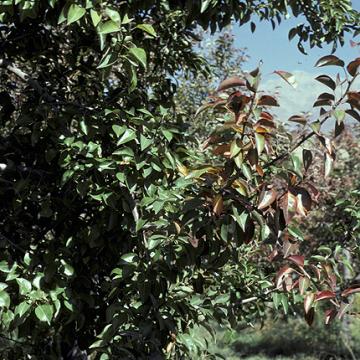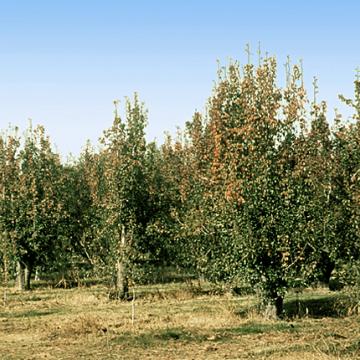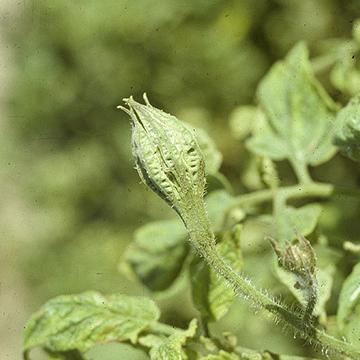DISEASE: Pear decline
HOST: Pear
Healthy pear shoot (left) and diseased shoots (center and right). Leaves are reddish and growth is stunted.

Pear decline | Pear
DISEASE: Pear decline
HOST: Pear (Pyrus communis)
PATHOGEN: 'Candidatus Phytoplasma pyri'
PATHOGEN SYNONYM: Phytoplasma Apple proliferation group
SOURCE: S. Thomson
DISEASE: Pear decline
HOST: Pear
Close-up of infected pear branch showing premature reddish coloration of leaves and cupped, stunted leaves.

Pear decline | Pear
DISEASE: Pear decline
HOST: Pear (Pyrus communis)
PATHOGEN: 'Candidatus Phytoplasma pyri'
PATHOGEN SYNONYM: Phytoplasma Apple proliferation group
SOURCE: S. Thomson
DISEASE: Pear decline
HOST: Pear
Reduced growth of infected trees in center of image.
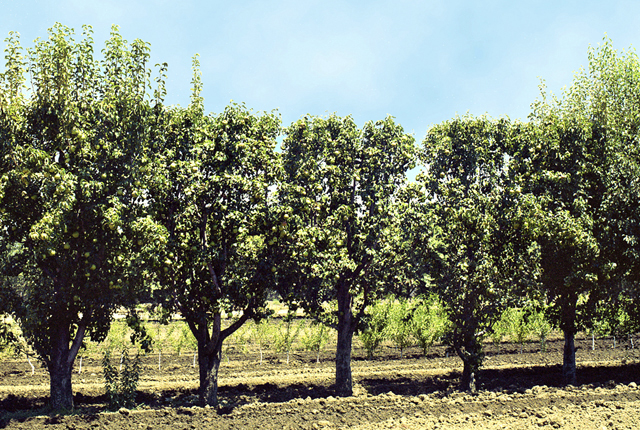
Pear decline | Pear
DISEASE: Pear decline
HOST: Pear (Pyrus communis)
PATHOGEN: 'Candidatus Phytoplasma pyri'
PATHOGEN SYNONYM: Phytoplasma Apple proliferation group
SOURCE: W. Sinclair
DISEASE: Pear decline
HOST: Pear
Psylla pyricola, the psyllid vector of pear decline phytoplasma.
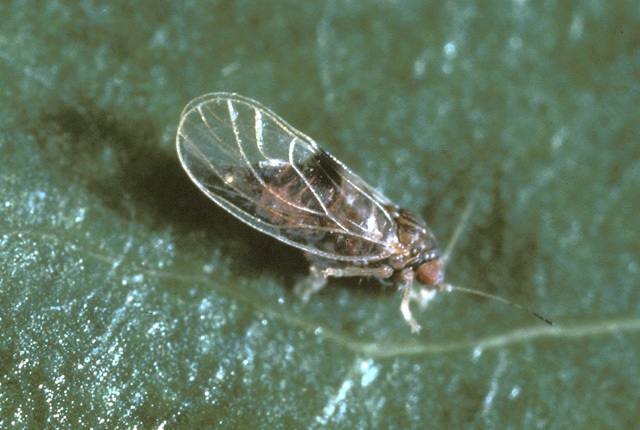
Pear decline | Pear
DISEASE: Pear decline
HOST: Pear (Pyrus communis)
PATHOGEN: 'Candidatus Phytoplasma pyri'
PATHOGEN SYNONYM: Phytoplasma Apple proliferation group
SOURCE: J. Clark, A. Purcell, M. Davis
DISEASE: Pear decline
HOST: Pear
'Bartlett' pears were grafted onto tolerant rootstock. All trees are infected. Note yellowish, diseased branches.

Pear decline | Pear
DISEASE: Pear decline
HOST: Pear (Pyrus communis 'Bartlett')
PATHOGEN: 'Candidatus Phytoplasma pyri'
PATHOGEN SYNONYM: Phytoplasma Apple proliferation group
SOURCE: C. Smart
DISEASE: Slippery skin
HOST: Onion
Rot progresses from the top of infected scales and eventually internal tissues rot. In early stages, the only external symptoms may be softening of the neck.

Slippery skin | Onion
DISEASE: Slippery skin
HOST: Onion (Allium cepa)
PATHOGEN: Burkholderia gladioli pv. alliicola
PATHOGEN SYNONYM: Pseudomonas gladioli pv. alliicola
SOURCE: H. Schwartz
DISEASE: Tomato big bud
HOST: Tomato
Characteristic symptoms are swollen, apical stems and stunted leaves. Apical stems are generally thickened and assume a stiff and erect growth habit. Internodes are shortened and flower buds are greatly enlarged.

Tomato big bud | Tomato
DISEASE: Tomato big bud
HOST: Tomato (Lycopersicon esculentum)
PATHOGEN: 'Candidatus Phytoplasma asteris'
PATHOGEN SYNONYM: Phytoplasma Aster yellows group
SOURCE: D. Teakle
DISEASE: Tomato big bud
HOST: Tomato
Symptoms are enlarge sepals that do not separate. Flower buds stay green and do not develop into fruit. Leaves are small and chlorotic.
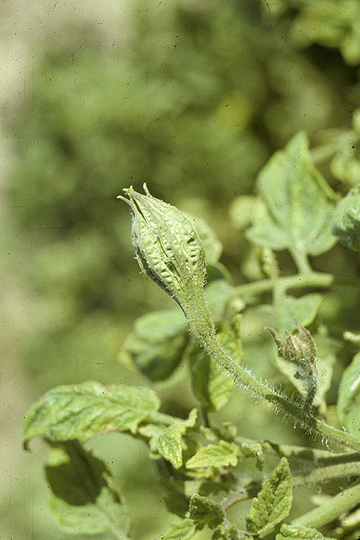
Tomato big bud | Tomato
DISEASE: Tomato big bud
HOST: Tomato (Lycopersicon esculentum)
PATHOGEN: 'Candidatus Phytoplasma asteris'
PATHOGEN SYNONYM: Phytoplasma Aster yellows group
SOURCE: S. Thomson
DISEASE: Tomato big bud
HOST: Tomato
Abnormal flower bud with greatly enlarged sepals. Sepals do not separate, fruit is not produced, and apical growth is upright.
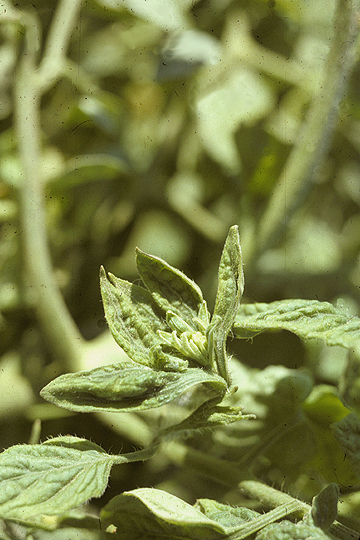
Tomato big bud | Tomato
DISEASE: Tomato big bud
HOST: Tomato (Lycopersicon esculentum)
PATHOGEN: 'Candidatus Phytoplasma asteris'
PATHOGEN SYNONYM: Phytoplasma Aster yellows group
SOURCE: S. Thomson



